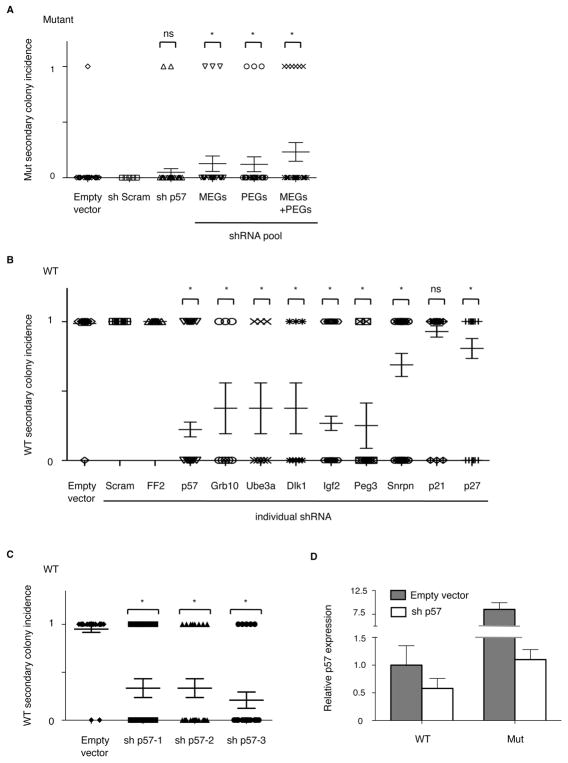Figure 2.
Lung cell self-renewal in culture is dependent on precise regulation of imprinted gene expression. Formation of secondary colonies following knockdown of various imprinted genes in Bmi1 mutant (A) or WT (B,C) lung cells by retroviral short hairpin RNA (shRNA) expression is shown. Each data point represents an individual well of primary colony cells plated for secondary colony formation, with 0 plotted for wells that lacked secondary colonies and 1 for wells with 1 or more secondary colonies. Infection with empty retroviral vector, sh-Scrambled (Scram), and sh-Firefly luciferase (FF2) served as negative controls. Additional controls, Snrpn, p21, p27. (A) Secondary colony formation in mutant cells infected with empty, Scram shRNA, p57 (sh2) shRNA, a MEG pool that included p57 (sh3), Grb10, and Ube3a shRNAs, a PEG pool that included Igf2, Snrpn, Peg3, and Dlk1 shRNAs, or a combined pool with all shRNAs (MEG + PEG) is shown. (B,C) Secondary colony formation in wild-type cells after infection with individual shRNA as indicated or 3 different shRNAs directed against p57. Results in A,B,C are data from four, three and three experiments, respectively. Asterisk (*) indicates P<0.05. D. qPCR analysis of knockdown efficiency of p57 by sh3 in wild-type or Bmi1 mutant lung cells; p57 expression was measured relative to empty retrovirus control-infected wild-type cells. Error bars, standard error (A–C) or standard deviation (D). See also Fig S2.

